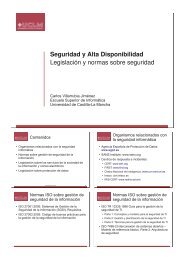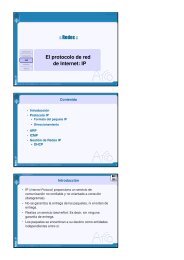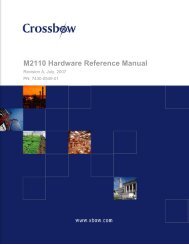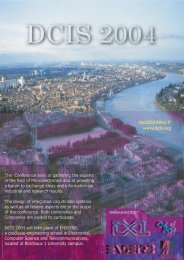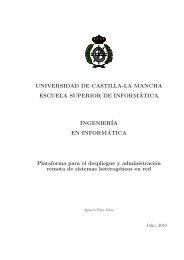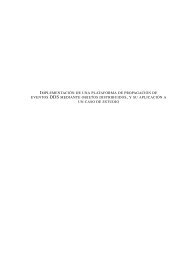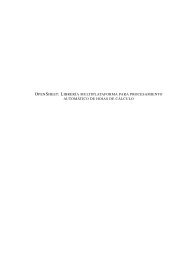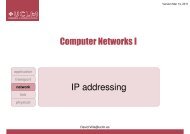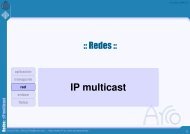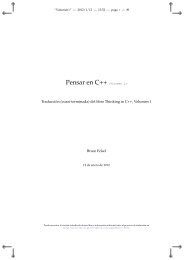Network Camera Server VB101
Network Camera Server VB101
Network Camera Server VB101
- No tags were found...
You also want an ePaper? Increase the reach of your titles
YUMPU automatically turns print PDFs into web optimized ePapers that Google loves.
a Safe Use of Equipmenta Safe Use of Equipmentfig-1EXAMPLE OF ANTENNA GROUNDING ASPER NATIONAL ELECTRICAL CODEGROUNDINGCLAMPELECTRICSERVICEEQUIPMENTNEC — NATIONAL ELECTRIC CODEANTENNALEAD IN WIREANTENNADISCHARGEUNIT (NECSECTION 810-20)GROUNDINGCONDUCTORS(NEC SECTION810-21)GROUNDING CLAMPSPOWER SERVICEGROUNDING ELECTRODESYSTEM(NEC ART 250. PART H)13. Lightning - For added protection of thisequipment during a lightning storm, orwhen it is left unattended and unusedfor long periods of time, disconnect itfrom the wall outlet and disconnect theantenna. This will prevent damage tothe equipment due to lightning andpower-line surges.14. Power Lines - An outside antennasystem should not be located in thevicinity of overhead power lines orother electric light or power circuits,or where it can fall into such powerlines or circuits. When installing anoutside antenna system, extreme careshould be taken to keep from touchingsuch power lines or circuits as contactwith them might be fatal.15. Overloading - Do not overload walloutlets and extension cords as this canresult in a risk of fire or electric shock.16. Object and Liquid Entry - Never pushobjects of any kind into this equipmentthrough openings as they may touchdangerous voltage points or short outparts that could result in a fire orelectric shock. Be careful not to spillliquid of any kind onto the equipment.17. Servicing - Do not attempt to servicethis equipment yourself as opening orremoving covers may expose you todangerous voltage or other hazards.Refer all servicing to qualifiedpersonnel.18. Damage Requiring Service - Disconnectthis equipment from the wall outlet andall power sources including batteries, andrefer servicing to qualified servicepersonnel under the following conditions.a. When the power-supply cord or plugis damaged.b. If any liquid has been spilled onto, orobjects have fallen into, theequipment.c. If the equipment has been exposedto rain or water.d. If the equipment does not operatenormally even if you follow theoperating instructions. Adjust onlythose controls that are covered by theoperation instructions. Improperadjustment of other controls mayresult in damage and will often requireextensive work by a qualifiedtechnician to restore the equipmentto its normal operation.e. If the equipment has been droppedor the cabinet has been damaged.f. When the equipment exhibits adistinct change in performance. Thisindicates a need for service.19. Replacement Parts - When replacementparts are required, be sure the servicetechnician has used replacement partsthat are specified by Canon or that havethe same characteristics as the originalpart. Unauthorized substitutions mayresult in fire, electric shock or otherhazards.20. Safety Check - Upon completion of anyservice or repairs to this equipment, askthe service technician to perform safetychecks to determine that the equipmentis in safe operating order.21. Do not install the equipment in thefollowing locations as this can cause afire or electric shock:- Hot locations- Close to a fire- Very humid or dusty locations- Locations exposed to direct sunlight- Locations exposed to salt spray- Close to flammable solvents (alcohol,thinners, etc.)22. When any of the following occurs,immediately switch OFF the equipment,unplug it from the main power supplyand contact your nearest Canonsupplier. Do not continue to use theequipment as this can cause a fire orelectric shock.- The equipment emits any smoke,heat, abnormal noise, or unusualodor.- A metal object falls into theequipment.- The equipment is damaged in someway.23. Please observe the following whenusing the equipment. Failure to do socan result in a fire or electric shock.- Do not use flammable sprays nearthe equipment.- Do not subject the equipment tostrong impacts.24. Please observe the following whenhandling the batteries. Failure to do socan result in the batteries bursting oremitting heat, sparks or corrosive fluid.- Do not throw the batteries into a fire,and do not heat, short-circuit orattempt to disassemble the batteries.- Do not attempt to recharge thebatteries.- Do not use batteries other than thosespecified for use with the equipment.25. Please observe the following whenhandling the batteries. Failure to do somay result in the batteries bursting oremitting heat, sparks or corrosive fluid.- When the batteries are used up, orwhen the equipment will not be usedfor an extended period, remove thebatteries.- When replacing the batteries, alwaysreplace both batteries, and do not usedifferent types of batteries together.- Ensure that the + and - terminals arecorrectly positioned when you loadthe batteries.- If any soiling or leakage of the internalbattery fluid occurs, thoroughly cleanthe soiling or leaked fluid with water.6 7a Safe Use of Equipment



